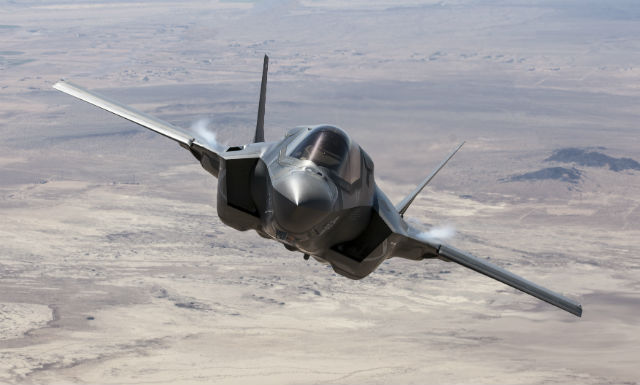More than 12 years after launching development, a now-familiar scenario for the Lockheed Martin F-35 programme is playing out again: a team of outside government evaluators predict a major new delay for entry into operational service, while programme insiders insist that no such thing will happen.
Only time will tell which side’s predictions prove most accurate, but the history of the F-35's thrice-delayed operational debut favours the Federal team.
The latest debate focuses on the newly-released annual assessment by the office of Michael Gilmore, director of the office of test and evaluation (DOT&E).
Last July, Gilmore told Congress that he expects the Block 2B software required for the US Marine Corps to declare the F-35B operational will be delivered eight months late. His latest assessment extends the delay by another four months until July 2016: one full year behind the USMC’s schedule.

Lockheed Martin
The Marine Corps, however, says the programme remains on track to declare initial operational capability with the short take-off and vertical landing (STOVL) variant of the F-35 in July 2015. The US Air Force and US Navy have decided to wait at least another year for the Block 3F software release before declaring IOC.
Lockheed, meanwhile, criticises the DOT&E’s assessment of a one-year delay as being based on an inflated test point growth rate.
Block 2B development testing experienced a 120% increase in test point growth in 2013, and the DOT&E assumed the same rate will be required this year. Lockheed, however, points out that 41% of the test point growth was blamed on re-testing fixes for the F-35’s glitch-prone helmet-mounted display system. Curiously, the DOT&E report claims that the helmet caused only 22% of the extra test points in 2013. The document also points out that the one-year delay prediction is based on a growth rate that excludes re-testing activity for the helmet-mounted display.

US Air Force
Getting the F-35’s impressive helmet to work, however, remains a problem, according to the report. The F-35 test team dedicated 42 flights to investigating and addressing problems with the system – and the bugs are not new. The joint programme office threatened last year to switch suppliers, but ultimately decided to stick with Vision Systems International, a joint venture between Elbit Systems and Rockwell Collins.
Some problems will require the F-35’s long-unrequited customers to spend more money to fix them. The DOT&E report concludes that night vision acuity on the helmet display will only improve if the programme decides to upgrade to a third-generation version of the same helmet, which features a better night vision camera.
But the F-35’s development problems have always been broader than any single system. Software to manage the F-35’s flight controls and mission systems has been a particular issue.
While the USMC waits for the Block 2B software, Lockheed is running months behind schedule on the preceding Block 2A package. Despite being installed on dozens of aircraft procured in the programme's fourth and fifth lots of low-rate initial production, Lockheed delivered the Block 2A software with nearly half of the contractually required software functions incomplete, the report says. Even as Lockheed continued working on Block 2A, the company handed over the initial increment of Block 2B software on time last February.
A second increment of Block 2B software arrived in October 2013, but the initial results did not seem encouraging. The software still has function problems with fusing sensor information and operating the F-35’s many sensors – including its APG-81 radar, ASQ-236 Barracuda electronic warfare systems, electro-optic targeting system and the distributed aperture system.
Three more increments of the Block 2B software will be released this year, with each one expected to gradually improve the maturity of the software and fix the bugs.
More promising has been the pace of testing intended to clear the F-35's flight envelope. The DOT&E report shows that all three variants remained generally on track in 2013 despite a variety of distractions, ranging from a weeks-long government shutdown and temporary fleet-wide groundings caused by component failures on the F-35A and F-35B.
Although the teams are making progress, the F-35’s engineers are still struggling with overcoming the aircraft’s tendency for transonic roll-off and buffet, according to the report. The condition affects all supersonic fighters to some degree, but has appeared particularly acute on the carrier variant F-35C. Programme engineers have exhausted options for altering the flight control laws to compensate. Testing is still under way to decide if using leading edge spoilers on the F-35C will be necessary, the report says.
Source: FlightGlobal.com



















